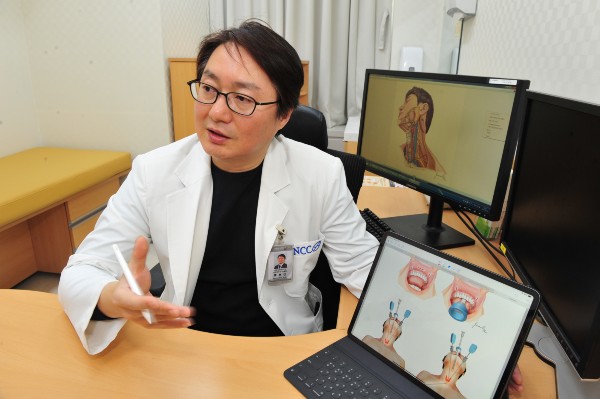Key lies in elaborateness, accuracy, KAMVA President Ryu says
As COVID-19 spreads, virus pictures with the shape of sharp spikes have appeared. The public’s fears seem to intensify because of the virus pictures stuck in various photos. That’s an effect of medical arts.
Medical arts seek to turn complicated and difficult medical knowledge and information into easy-to-understand visuals. The area expresses images not just for experts, such as medical books and papers but also educational materials for the general public, including patients, as 2D illustrations and 3D videos.
A group of people has gathered to convey correct information not just to experts but the general public and help them better understand the medical phenomenon. The Korean Association of Medical Visualization of Artists is the organization. KAMVA, which founded last year, held the first academic conference in January and went into action in earnest.
Korea Biomedical Review met with Ryu Joon-sun, the first president of KAMVA who also heads Thyroid Cancer Center at the National Cancer Center, to hear from him what medical arts are and why they are becoming increasingly important in the medical field.

Question: “Medical arts” sound somewhat unfamiliar. Please explain.
Answer: Many people mistake it as “fine arts.” Medical illustration is an area, which visually expresses complicated medical knowledge and information to convey them more easily. It has a history of longer than a century. The most famous medical illustrator is none other than Leonardo da Vinci. The anatomical chart he drew was surprising as it contains both medical knowledge and artistic expression. In modern days, too, the needs for medical arts are rising along with the development of digital tools, including Photoshop.
Q: What are the reasons for the increasing needs among the medical community for medical arts?
A: Doctors have missions not only of physicians but of researchers and educators. About one million academic papers are registered with the MEDLINE, the database of the America National Library of Medicine. Who can read them all? You have to choose among them, and nothing can beat visualized data of facts and materials in making decisions. Up to 90 percent of information people accept a day is visual information. A picture can reportedly deliver information 60,000 times faster than texts. What can be more effective? This explains why we need to visualize medical information and provide them for the general public and experts. Medical journals also demand visual drafts in screening draft texts, helping the growth of this area further. We call this “graphical abstract.” An ideal case is researchers make these drawings themselves, as they know the contents best as well as what’s most important among them. The time has come for doctors and scientists to make drawings.
Q: What is important in medical arts?
A: You can make beautiful images by asking design firms to do the job. If the pictures are the wrong one, however, they can transmit false information. That shows why we think accuracy is most important in medical illustration. People don’t usually say a picture is right or wrong. In the medical illustration, however, there are right drawings and wrong ones. I can see some beautiful drawings are being circulated, although they have no meaning as educational material.
Q: You are also known as an illustrator. What made you have an interest in medical arts?
A: I used to make lecturing materials myself. Afterward, other people saw them and asked them to do likewise for them. I accepted such requests for fun, and it became one of my jobs. I have completed the publication of the three-volume textbook, in joint work with the Korean Society of Head and Neck Surgery, and published several books, too. People who watched my drawings say my surgical experiences might have helped my drawing. The opposite is true, however. Drawing pictures has helped me much in operation because you have to know everything to draw pictures. You can hardly make drawings with sketchy understanding. Most people do not know about this process. To engage in medical arts, you should study hard. And hard study should be a duty to make accurate drawings.
Q: Since its foundation last year, your society went into action in earnest this year. What are your plans?
A: We will hold an academic conference once and host two workshops a year. We have held a workshop under the title of “Digital tools for medical professionals” to educate them about basic graphic tools, and their response was good. As we had to demonstrate live drawing, the workshop was held at an auditorium accommodating about 80 people, and it was filled. We are planning to hold more such workshops as there are many requests.
I also hope the society will serve as a gathering place for medical professionals and artists.
Many medical professionals attended the academic conference, and doctors can provide mentoring services even if they do not make drawings themselves. As experts, they can advise on what’s lacking in specific pictures while becoming the clients of illustrations or illustrators they favor. I hope the two groups will be able to set up a win-win relationship through KAMVA.

